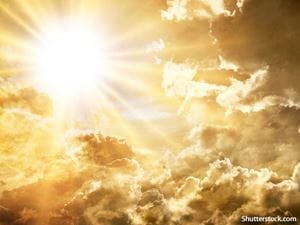
In order to celebrate the summer solstice—the beginning of summer, and the time of the longest day of the year—you have to understand how it works. During the summer solstice, the Earth’s northern or southern hemisphere tilts towards the sun. While this happens twice a year overall, it only occurs once a year in each hemisphere—sometime between June 20 and June 22 in the northern hemisphere and between December 20 and December 23 each year in the southern hemisphere. The summer solstice day has the longest period of daylight—except in the Polar Regions, where daylight is continuous, from a few days to six months around the summer solstice.
The significance of the event varies depending on the culture. However, most countries recognize the event in some way with holidays, festivals and rituals. The themes vary—anywhere from religion or fertility.
Pagans were one of the first religions to celebrate the summer solstice. During this period of time, Pagans celebrate Midsummer, also known as St. John’s Day. However, Christians associate the summer solstice with the nativity of John the Baptist—Catholic Orthodox and some Protestant churches recognize the same.
In the United States each state observes the summer solstice differently:
- Tucson, Arizona: Has an inaugural Earth walk solstice celebration, with other events in San Francisco, Jerusalem, and other communities around the world. The event features a walk through a giant labyrinth, musicians, healers, ceremony, etc.
- Santa Barbara, California: Hosts an annual celebration that typically occurs on the weekend of, or the weekend after the actual solstice, and includes a festival and parade.
- Geneva, Illinois: Hosts a Swedish Day festival on the third Sunday of June. The festivities features maypole-raising, dancing, and presentation of an authentic Viking ship that dates back to 1911.
- Kaleva, Michigan: A gathering occurs by the Village Roadside Park. At the celebration, pannukakku which is a finished, oven baked pancake is eaten, along with strawberry shortcake – followed by a bonfire.
- New York: The NYC Swedish Midsummer celebration that occurs in Battery Park, New York City brings 3,000 – 5,000 people annually. The event has taken place, each year, since 1941. The Swedish Midsummer is also celebrated in other places that have a large Swedish and Scandinavian population, such as Rockford, Illinois, Chicago, Minneapolis, Minnesota, and Lindsborg, Kansas.
- Seattle, Washington: The Fremont neighborhood puts on a very large parade and pageant. The festivities are considered to be very controversial because it includes painted naked cyclists.
- Wyoming:The summer solstice celebration is held on Casper Mountain in Wyoming at Crimson Dawn Park. The majority of the community, and even some people around the world, come to partake in the large bonfire. During the bonfire, everyone is invited to throw a handful of red soil into the fire in hopes that they get their wish fulfilled.
Other well-known countries partake in the celebrations differently:
- Austria: Each year, a procession of ships sail down the Danube River. Up to 30 ships sail down the river in line as fireworks fill the sky and bonfires along the hill tops are blazed. The festivities, that include the ships and fireworks, usually last for 90 minutes.
- Brazil: Most participants celebrate with typical clothing, food and square dancing.
- Canada: In Quebec fireworks light the night sky.
- Denmark: Early in the 1770s the celebrations began by men and women gathering special herbs that they would need for the rest of the year to cure people. Still now the same overall perception is still practiced however, participants gather near healing waters and a large bonfire is made to ward away evil spirits.
- France: Traditionally summer solstice is celebrated with bonfires. In some French towns, a tall bonfire is built by the inhabitants in order to be lit on St John’s Day – the huge bonfire is named “chavande”.
- Greece: Midsummer celebrations are referred to as klidonas which mean sign or oracle. During this time unmarried women would discover their potential mates through a ritual. It’s also customary to burn Mayday wreaths that are used to decorate the doors of the houses for the previous two months, in large communal bonfires. These celebrations are accompanied by music, dancing and jumping over the flames.
- Norway: In most areas of Norway, everyone participates in a large bonfire. In Western Norway, it is customary to arrange mock weddings between adults and children. The wedding is meant to symbolize the blossoming of new life. Other customs include a girl putting flowers under her pillow that night because it is believed that she’ll dream of her future husband.
Other holidays and celebrations are shared with summer solstice. All in all, some of these special days relate their festivities directly with that of summer solstice. Some of the holidays shared and observed are:
- Day of Private Reflection – celebrated primarily in Northern Ireland
- Guru Purnima – celebrated only in India
- Christmas – celebrated in correlation with summer solstice in the southern hemisphere
- International Surfing Day
- International Yoga Day
- Juhannus – celebrated primarily in Finland
- National Aboriginal Day – celebrated primarily in Canada
- Tiregan – celebrated only in Iran
- World Music Day – celebrated worldwide
Even though summer solstice traditions vary depending on the locale, there is no doubt that the holiday is still celebrated worldwide. It’s the kickoff for the summer season and is recognized through various celebratory events.

